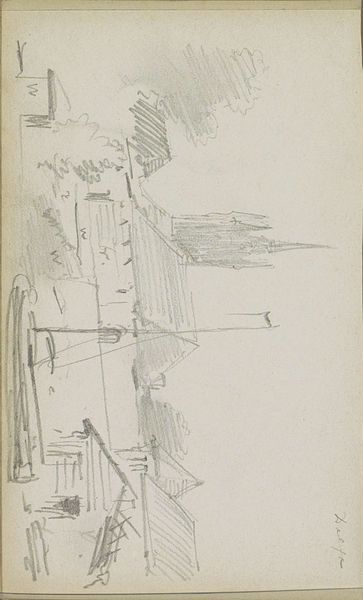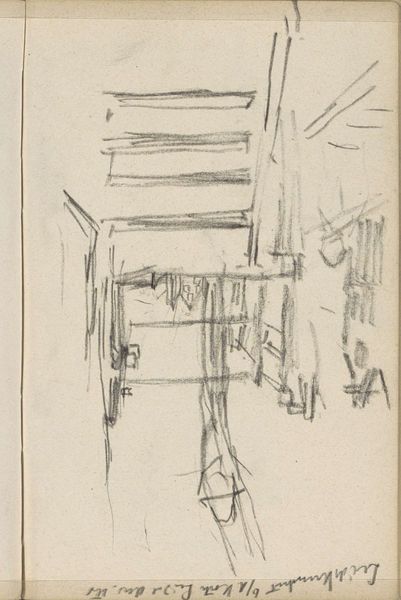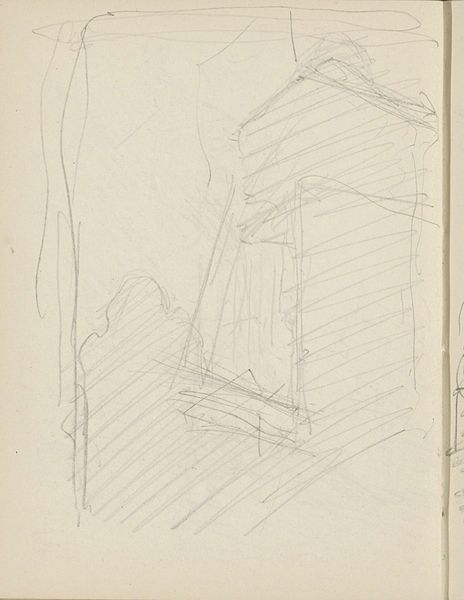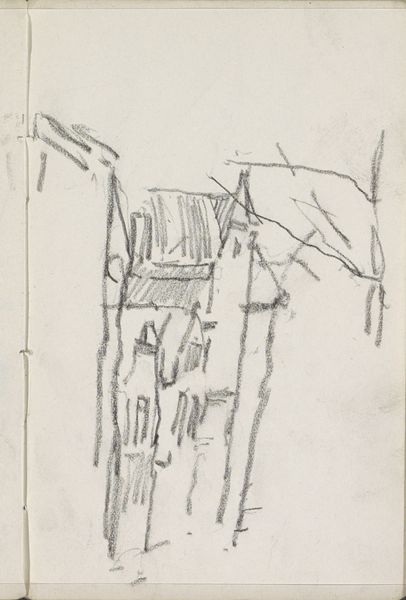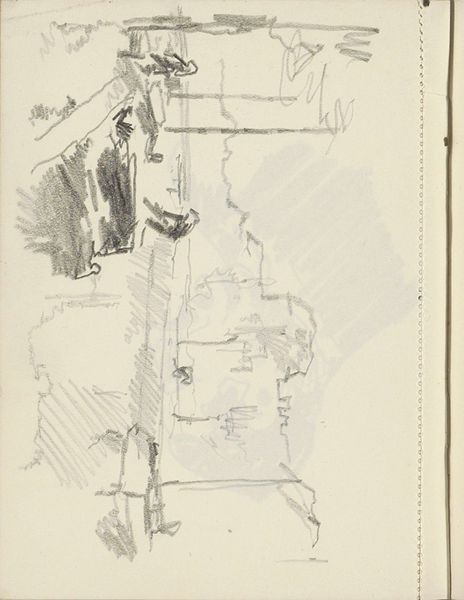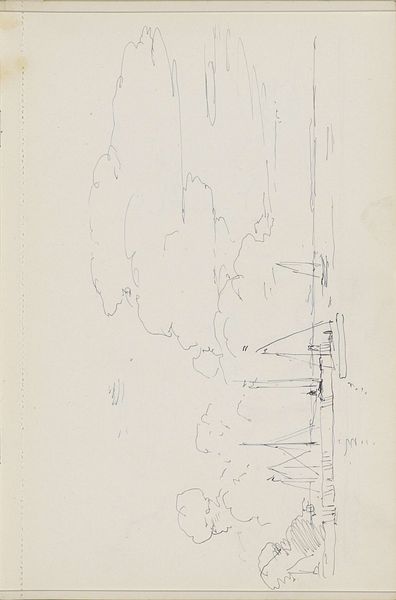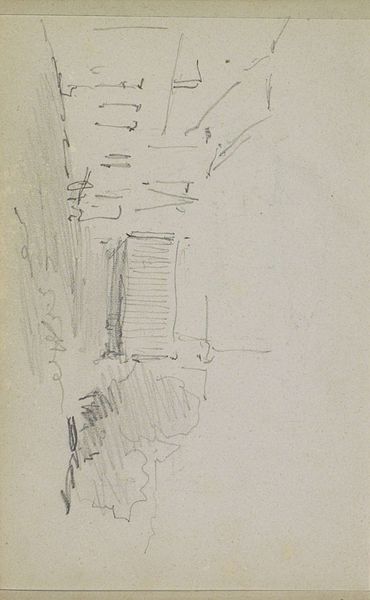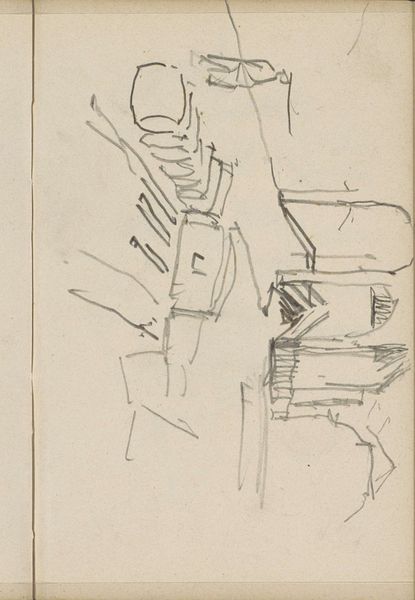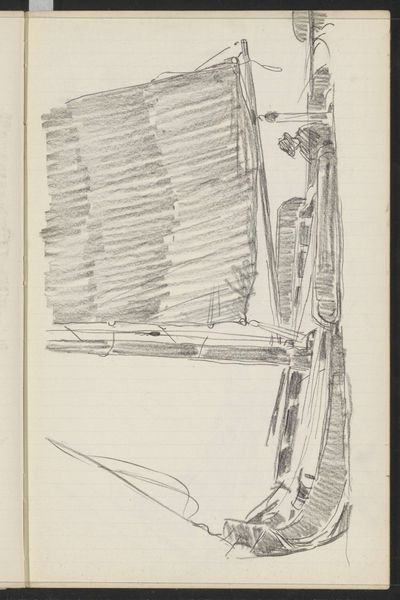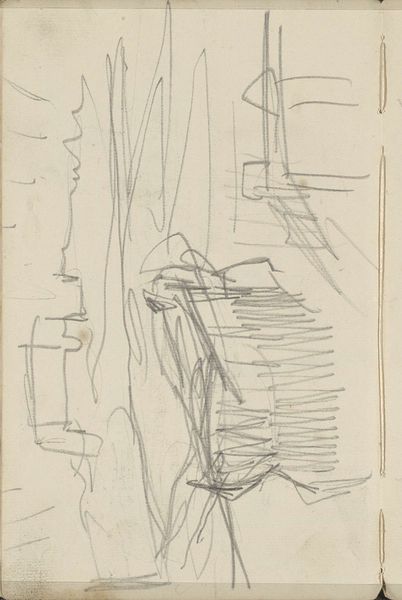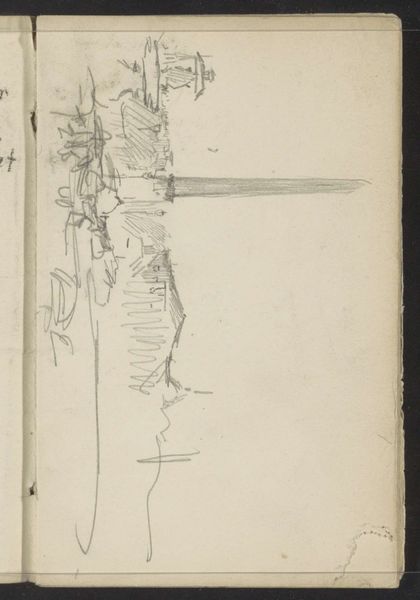
drawing, graphite
#
drawing
#
graphite
#
cityscape
#
realism
Copyright: Rijks Museum: Open Domain
Editor: This is "Waag op de Nieuwmarkt te Amsterdam," a graphite drawing by Cornelis Vreedenburgh, made sometime between 1890 and 1946. It has a tentative, almost ghostly quality. What aspects stand out to you? Curator: What interests me immediately is the materiality of the drawing itself. Graphite on paper: a readily available, relatively inexpensive combination. This contrasts sharply with the monumental architecture it depicts – a site inherently linked to commerce and civic life. Think about the labor involved. Editor: You mean, the artist's labor versus the labor that would have taken place in the actual building? Curator: Precisely. The drawing is quick, suggestive; a preliminary sketch perhaps. The actual Waag building, however, signifies permanence, power, and the long hours of countless merchants. This seemingly simple drawing opens up questions about artistic production as work. Consider where the graphite came from and the factory production of the paper, then picture the artist engaging in this process. It adds a layer, doesn't it? Editor: It does! So it's less about the "romantic" view of the artist and more about seeing them within a larger economic and industrial network. Curator: Exactly! Vreedenburgh isn’t just capturing a scene, he’s participating in a system of material exchange and contributing to its visual record. Editor: That really makes me think about the social implications of even the simplest materials. I’ll never look at a pencil the same way again! Curator: And hopefully, that expanded view makes you reconsider not just art, but the world.
Comments
No comments
Be the first to comment and join the conversation on the ultimate creative platform.
